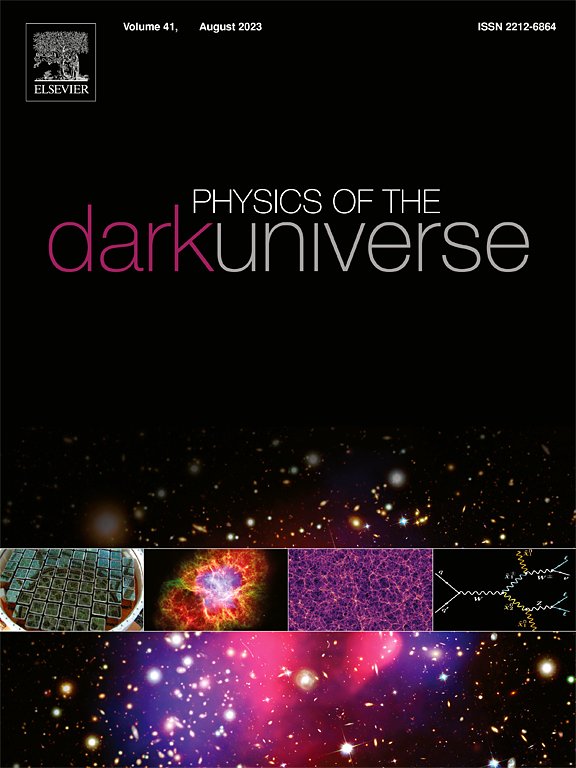Barrow-Tsallis熵的广义对数修正可以缓解哈勃张力
IF 5
2区 物理与天体物理
Q1 ASTRONOMY & ASTROPHYSICS
引用次数: 0
摘要
本文研究了广义Barrow-Tsallis熵,以量子引力变形参数Δ、Tsallis非扩张性参数q和对数校正参数α为特征,作为在修正的宇宙学模型中解决哈勃张力的框架。通过结合Barrow熵S∝AΔ和Tsallis熵Sq=A4G+α α lnqA4G+β β,我们在FRW (friedman - robertson - walker)宇宙中推导了修正的Friedmann方程,引入了有效的暗能量成分。该模型使用综合观测数据集进行约束,包括普朗克2018年宇宙微波背景(CMB)数据、重子声学振荡(BAO)数据、宇宙天文钟(CC)数据、万神殿超新星数据和普朗克透镜数据。我们的分析表明,这些数据集的包含显著减轻了哈勃张力,与普朗克2018和R22局部测量的一致性达到1.21σ和0.98σ。参数α表示与经典熵的细微偏差,而Δ被严格限制在Δ<;0.002,这表明在宇宙尺度上量子引力的修正最小。此外,Tsallis参数q稳定在q≈0.41处,表明模型在拟合观测数据方面具有鲁棒性。这项工作表明,广义熵框架作为标准ΛCDM模型的一个令人信服的替代方案,在调和哈勃张力和解释晚时间宇宙加速方面提供了有竞争力的表现。本文章由计算机程序翻译,如有差异,请以英文原文为准。
Generalized logarithmic modification of Barrow–Tsallis entropy can alleviate the Hubble tension
This study investigates the generalized Barrow–Tsallis entropy, characterized by the quantum-gravitational deformation parameter , the Tsallis nonextensivity parameter , and the logarithmic correction parameter , as a framework for addressing the Hubble tension within a modified cosmological model. By incorporating the Barrow entropy, , and Tsallis entropy, , we derive modified Friedmann equations in a Friedmann–Robertson–Walker (FRW) universe, introducing an effective dark energy component. The model is constrained using a comprehensive combination of observational datasets, including Planck 2018 Cosmic Microwave Background (CMB) data, Baryon Acoustic Oscillations (BAO), Cosmic Chronometers (CC), Pantheon Supernovae, and Planck lensing data. Our analysis reveals that the inclusion of these datasets significantly mitigates the Hubble tension, achieving a agreement with Planck 2018 and with the R22 local measurement. The parameter indicates subtle deviations from classical entropy, while is tightly constrained to , suggesting minimal quantum-gravitational corrections on cosmological scales. Furthermore, the Tsallis parameter stabilizes at , demonstrating the robustness of the model in fitting observational data. This work demonstrates that the generalized entropy framework serves as a compelling alternative to the standard CDM model, offering competitive performance in reconciling the Hubble tension and explaining late-time cosmic acceleration.
求助全文
通过发布文献求助,成功后即可免费获取论文全文。
去求助
来源期刊

Physics of the Dark Universe
ASTRONOMY & ASTROPHYSICS-
CiteScore
9.60
自引率
7.30%
发文量
118
审稿时长
61 days
期刊介绍:
Physics of the Dark Universe is an innovative online-only journal that offers rapid publication of peer-reviewed, original research articles considered of high scientific impact.
The journal is focused on the understanding of Dark Matter, Dark Energy, Early Universe, gravitational waves and neutrinos, covering all theoretical, experimental and phenomenological aspects.
 求助内容:
求助内容: 应助结果提醒方式:
应助结果提醒方式:


